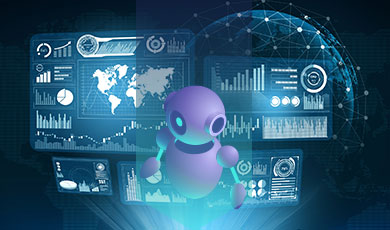Which misstep are you making in your pursuit to provide the best customer experience?
Solving the customer experience problem isn’t easy. If it were, our own interactions with the companies we do business with would be so much more satisfying across the board. Companies consistently make three missteps when trying to create great customer experiences through data.
The problem is that data is everywhere, which leads to the first misstep: We use a lot of apps. Not that that’s bad; we need our apps on a daily basis to accomplish our work. The problem centers around our application data not being connected or consistent, so we don’t get a single view of customer data.
A lot of the time, we connect our data in spreadsheets. It is here where we see the inconsistency in the data, and we fix it manually, the second misstep. The fixes don’t stop there. The next time we need to combine it to use for a marketing campaign, sales effort, or analytic endeavor, we repeat the process. Still isolated, the data in the original systems remains out of sync and incorrect.
Those ongoing fixes to the data leads to the third misstep: one-time attempts to cleanse the data. In these cases, companies turn to third parties or bring in interns to right their data. Working with these groups creates an issue because data is constantly changing on a daily basis. Your data is messy again as soon as the check is written and sent to the vendor or as the intern walks out the door.
These missteps keep customer data inaccurate, duplicated, and irrelevant. Smart organizations are trying to avoid these missteps, but breaking free of them is difficult. Here are two examples that Monica and I see as extremely relevant in showing that companies that build great experiences through great data will keep current customers and attract new ones.
Am I Really A Valued Customer?
Last year, Monica bought a television from a leading online retailer. This retailer sets the industry standard. They make it very easy to buy from them. Monica even belongs to their membership program and can purchase anything in one click. This company is smart and way ahead of its competition.
It’s not above making a misstep, though. The day after purchasing the television, Monica received an email from this company with a slew of television offers similar to the one that she had purchased. The offers were too late, and made her question just how smart the company really was.
Because of Monica’s experience looking behind the scenes at customer-centric companies, she knew where to leave the blame. Fragmented information and siloed applications had weakened the bond between her and her brand and hurt her experience. Her browsing history and purchase history hadn’t yet been connected, and Monica realized that the company didn’t really know her and her recent activity. The order fulfillment team knew that she had bought something, and yet, the marketing team didn’t.
Mistakes like these can be forgiven but what if a competitor was able to prove they understood her better and could offer a better experience? The original company could potentially lose her business.
What’s in a Name?
Here’s another example: As you can imagine, companies have difficulty spelling my name, and it doesn’t matter how long I’ve been a customer. I’ve had a charge card from a global financial services company for nearly 15 years. It’s another very smart company. I never leave home without that card. Even with my long-term relationship, I regularly get duplicate emails addressed to Prasana or Prashanna. I can’t even count the misspellings I’ve seen, but I get it. Prasanna is an unusual name.
But it’s spelled correctly on my card and monthly bill. What’s happening here is inconsistency across their systems and inaccurate information. An email marketing system is seeing me twice in their system while their charge card system doesn’t. So how do they know which is correct? In their analytics, am I counted twice (or more) because they have at least two views of me?
We’ve all had these experiences. I have to ask, though, in a world where customer experience is the new battlefield, should we still expect them?
Put Your Best Foot Forward with Great Customer Experiences
Trianz and Informatica are devoting their expertise, resources, and time to changing poor customer experiences to great customer experiences. We are combining Informatica’s market-leading master data management imperatives with expert services from Trianz to go far beyond data cleansing to delivering exceptional customer experiences through data.
Together, we’re helping smart companies make sure they’re being smart about the way they manage the total customer experience; and helping them create a clean, consistent, and connected view of the total customer relationship. Luckily, customers leave data footprints. To be useful, this data needs to be continually managed so that it is up to date, accurate, complete, and validated to fuel the companies’ applications and analytics with trusted customer profiles.
To help understand why your customer experiences are misfiring, download this e-book on the three missteps that smart companies make to try to fix the customer experience problem. It is a quick and worthwhile read that will help you understand why some of your past attempts may have not actually moved you closer to a total 360° view of your customers.
Authors: Prasanna Rajagopalan, Monica Mullen
Contact Us Today
Contact Us Today










